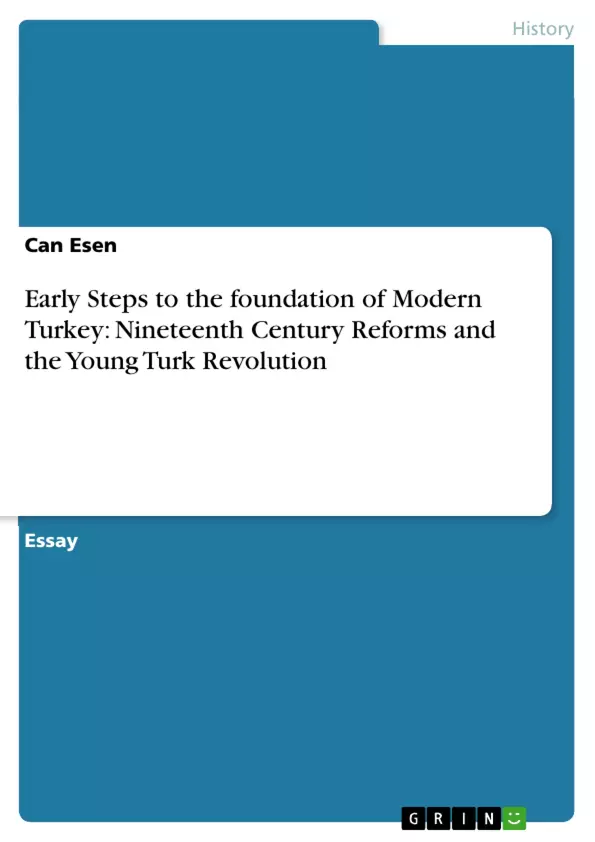The modern Republic of Turkey has been hesitant to embrace its Ottoman past for nearly three quarters of a century following the years of its foundation. During the Ottoman period, majority of the people were living an Islamic lifestyle under the guidance of traditional Islamic shari’a law. This situation was challenging to the modern, secular ideas of the young republic. In order to overcome this problem, the new secular state controlled religious affairs and abolished the institution of Caliphate. Morever, founders of the modern Turkey created a National Assembly and which served as the early steps to the representative democracy. There were series of reforms on the education, military system, women’s rights and general dress code for public places. However, although Ataturk and his friends’ contribution to the Turkish modernization is undeniable, it should be made clear that his ideas were inspired both by the realities of his time and more importantly the reforms of the late Ottoman period. Thus, contrary to what primary level education which is taught in state schools in Turkey suggests, it is hard to claim that he singlehandedly invented all the ideas and reforms concerning the Turkish modernization. In fact, the idea of Turkish modernization long predates the foundation of the secular republic. There had been reforms from top to down during the nineteenth century. These were followed by a new group of intellectuals who were influenced by the ideas of Enlightenment and French Revolution who were called ‘Young Turks’. The Young Turk movement, which was emerged among the students of higher learning schools of Istanbul attracted many other members of the society. The members of the movement were united in their opposition to the personal rule of the Sultan and created the backbone of the modern democratic reforms happened during early years of the modern Turkish Republic (Hanioglu, 2011).
Inhaltsverzeichnis (Table of Contents)
- Introduction
- The Ottoman Empire at the turn of the 19th century
- The Tanzimat Reforms and the Introduction of Modern Concepts
- The Young Turk Revolution and its Implications
- Conclusion
Zielsetzung und Themenschwerpunkte (Objectives and Key Themes)
This research paper aims to analyze the nineteenth-century reforms and the ideas of the Young Turks, exploring their contribution to the process of Turkey's modernization culminating under the rule of Atatürk. The paper will first examine the socio-political situation of the Ottoman Empire during the nineteenth century, including the reforms implemented by the ruling elite to avert the Empire's downfall. It will then delve into the Young Turk Revolution of 1908 and their policies leading up to the end of World War I.
- The decline of the Ottoman Empire in the 19th century
- The Tanzimat Reforms and their impact on Ottoman society
- The Young Turk Revolution and its role in modernization
- The influence of Western ideas on the Ottoman Empire
- The legacy of Ottoman reforms on the foundation of modern Turkey
Zusammenfassung der Kapitel (Chapter Summaries)
The first chapter provides an overview of the Ottoman Empire at the turn of the 19th century, highlighting its declining economic and military capabilities compared to European powers. This chapter explores the empire's vulnerabilities, including the weakening of central authority and the emergence of independence movements in the Balkans.
The second chapter focuses on the Tanzimat Reforms, a series of modernization efforts implemented by the Ottoman elite in the mid-19th century. This chapter analyzes the introduction of modern concepts such as secularism, education, and legal reforms into the Ottoman system, discussing their impact on Ottoman society and their role in shaping the trajectory of modernization.
The third chapter examines the Young Turk Revolution of 1908, a significant turning point in the history of the Ottoman Empire. This chapter discusses the rise of the Young Turk movement, their ideology, and their efforts to establish a more democratic and modern political system. It analyzes the impact of the Young Turk Revolution on the Ottoman Empire's internal and external affairs, including the subsequent political and social changes.
Schlüsselwörter (Keywords)
The paper focuses on key themes such as Ottoman Empire, modernization, Tanzimat Reforms, Young Turk Revolution, Atatürk, secularism, education, legal system, and the impact of Western ideas on the Ottoman Empire.
- Quote paper
- Can Esen (Author), 2011, Early Steps to the foundation of Modern Turkey: Nineteenth Century Reforms and the Young Turk Revolution, Munich, GRIN Verlag, https://www.grin.com/document/184874



